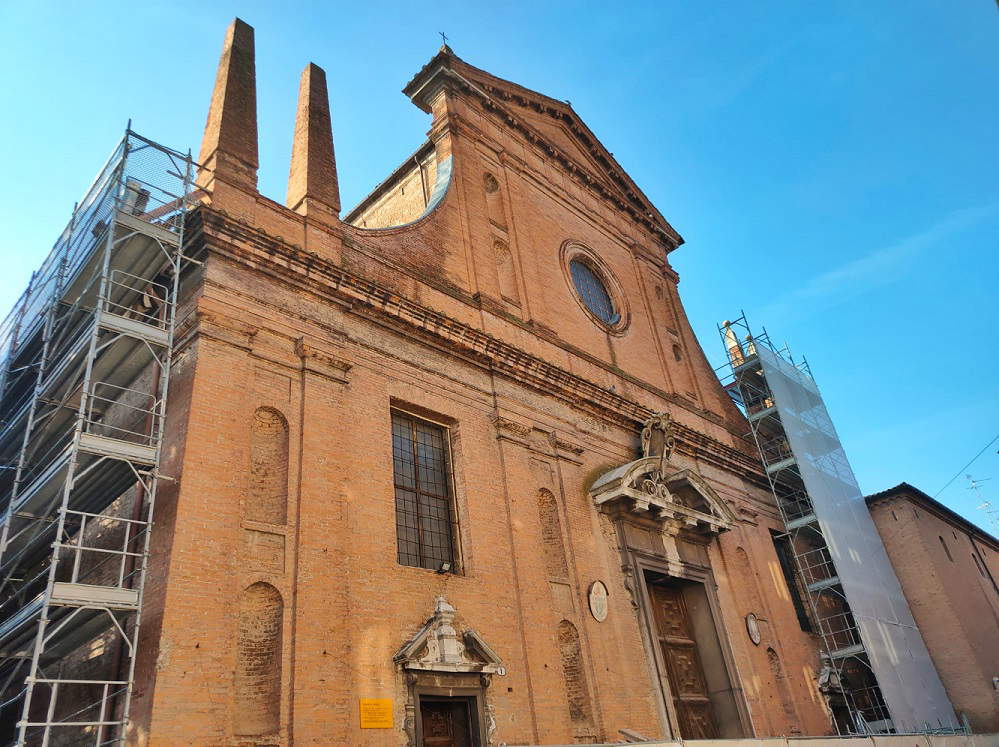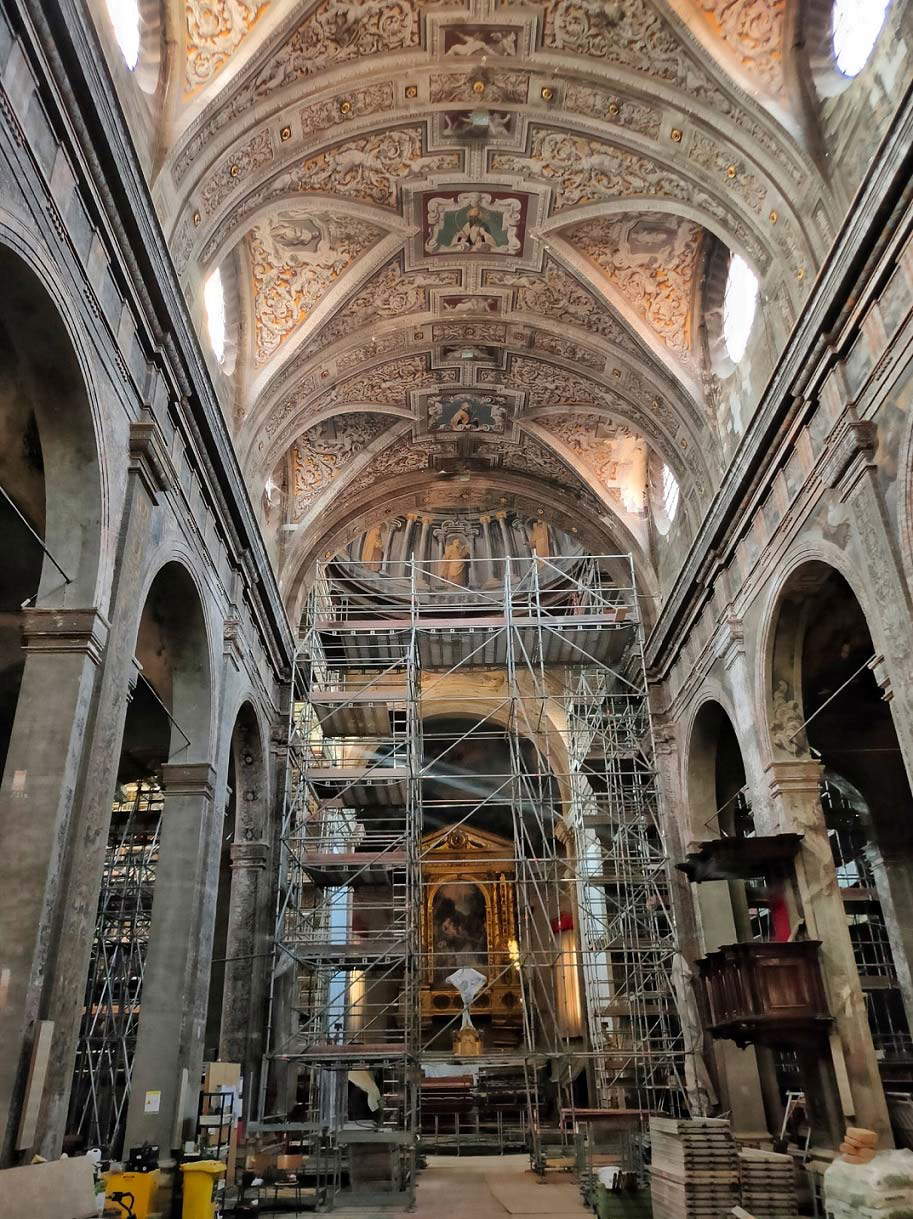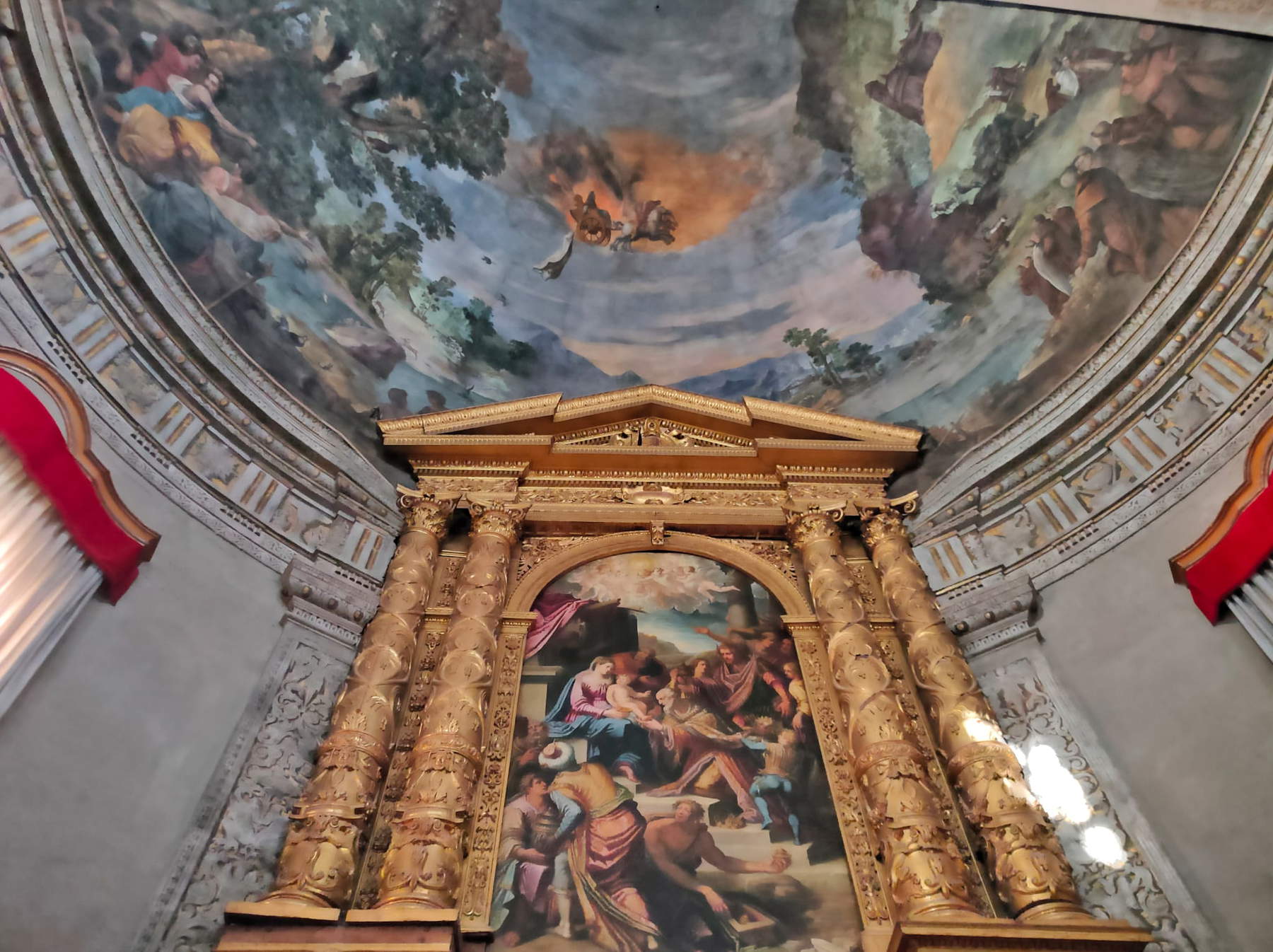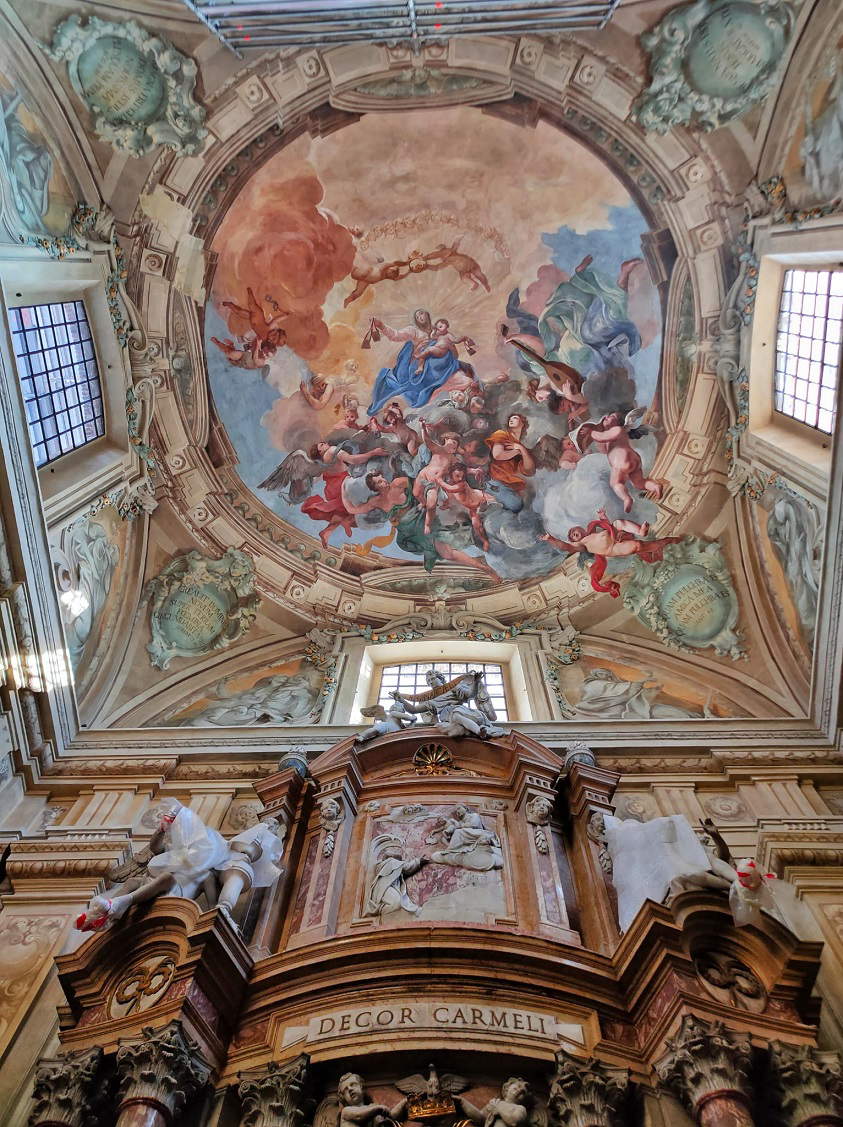In Ferrara restored the apse of the Church of the Conversion of St. Paul, closed since 2007
In Ferrara, a year after work began on the Church of the Conversion of St. Paul, the full-bodied complex of interventions on the church building, closed for about 15 years, which is among the oldest in Ferrara (the first nucleus dates back to the 10th century), and which was damaged by the 1570 earthquake and the 2012 earthquake, is proceeding at a rapid pace. The church is known for the many artists who have left works there, including Bastianino, Girolamo da Carpi, Ippolito Scarsella, Domenico Mona, and most likely Carlo Bononi, and for being the burial place of one of the greatest artists of the 16th century, Giovanni Antonio De Sacchis, better known as the Pordenone.
Internally, restoration work on the fascinating fresco depicting the Rape of Elijah by Scarsellino in the apse basin has recently been completed. The work is from the late 16th century, and depicts the prophet Elijah’s ascent to heaven: the protagonists are the light of celestial space and the landscape. The Rape of Elijah surmounts the church’s fine 16th-century wooden choir, which also stands out for housing a rare monument of organ-making of the period: the complex Cipriani-Chianei Renaissance organ.
Among the completed restorations is that of the Carmine Chapel, built in the 1760s by Luca Danesi. Looking up, one can admire, in the vault, Giacomo Parolini’s Glory of the Virgin in its new luster. It is judged to be the first, albeit late, example of a Baroque fresco in Ferrara. The decoration was uncovered to the public on Christmas night 1705.
Overall, there are dozens of works in progress, which in many cases are proceeding in parallel: restoration, consolidation, cleaning, retouching, finishing, structural checks, insertion of reinforcing beams and steel pillars. Work is also underway in the attic, with complex actions. Here reinforcing elements have already been placed, again in steel, and the replacement and integration of wooden beams, consolidation of vaults and insertion of tie-rods are being carried out. Currently, the construction site is concentrated on the right transept, in the counterpart of the main facade and in the side chapels.
The church is at the center of a double allocation (totaling 3.8 million euros): a share, of about three million euros, from the ministerial funding line of the Ducato Estense, and about 806 thousand euros from the Emilia-Romagna Region (post-earthquake funds), mainly for the structural part. According to a specific agreement, the Municipality of Ferrara is the contracting station and also manages the economic part (funding passes through municipal coffers).
The work, by the temporary grouping of companies composed of the firms Leonardo Srl and Lolli Raffaele impianti Srl of Bologna, was delivered on November 29, 2021, and started in January 2022, after preliminary site operations were carried out a year ago. It will take a few more months before seeing its completion.
St. Paul’s, 61 meters long and over 25 meters wide, was built, in its first core, in the 10th century. It has been closed since 2007. The building, which has attached the former Carmelite convent and Renaissance cloisters, is located between Corso Porta Reno 60 and Piazzetta Alberto Schiatti, named after the architect who designed its rebirth after the 1570 earthquake. The current texture of the church of San Paolo is precisely due to the post-earthquake reconstruction of 1570. Significantly damaged by the historic seismic event, St. Paul’s was entirely rebuilt to Schiatti’s design between 1573 and 1611, when it was consecrated by Bishop Giovanni Fontana on the day of the Conversion of St. Michael. The only remaining evidence of the earlier layout is the boundary wall with the first cloister of the adjoining monastery on the west side, which has frescoes of great beauty from both the late 14th century (visible in part from the corridor of the municipal offices in the cloister) and the 15th century.

 The
The

 |
| In Ferrara restored the apse of the Church of the Conversion of St. Paul, closed since 2007 |
Warning: the translation into English of the original Italian article was created using automatic tools. We undertake to review all articles, but we do not guarantee the total absence of inaccuracies in the translation due to the program. You can find the original by clicking on the ITA button. If you find any mistake,please contact us.




























